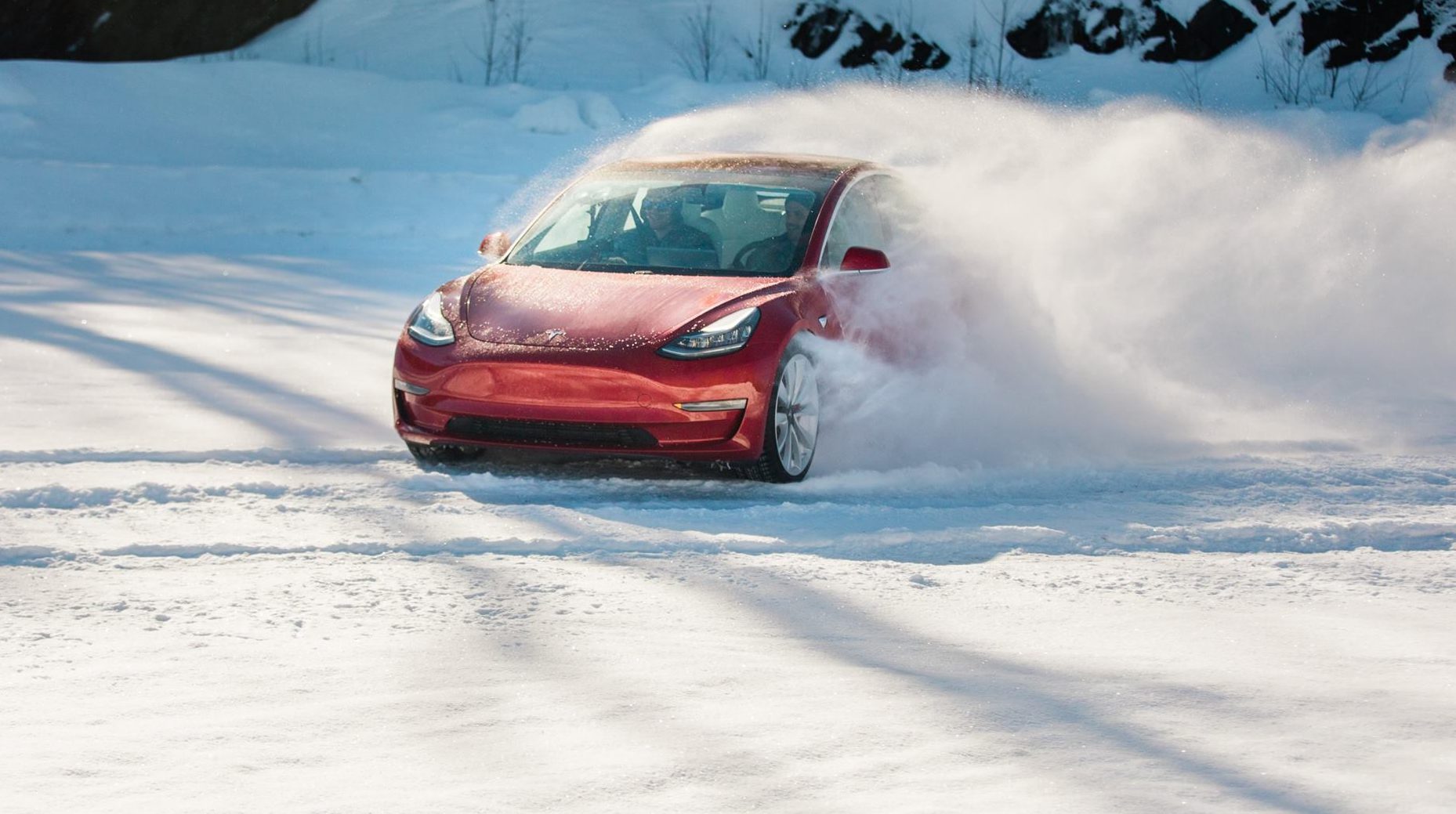
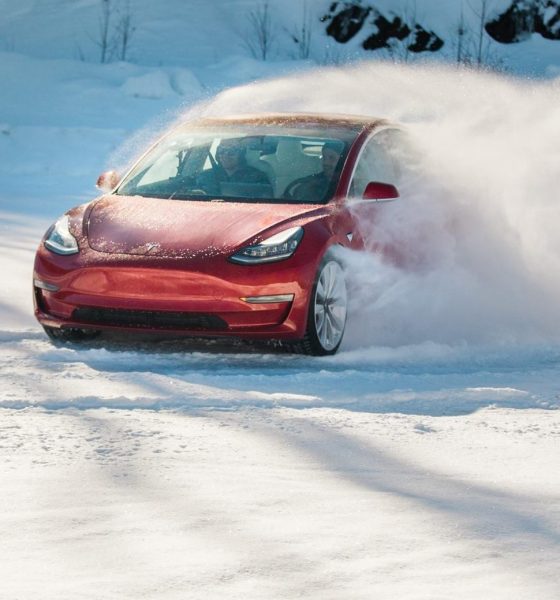
News
Tesla owners' winter driving insights proves EVs' are great cars for sub-zero conditions
Thanks to outdated assumptions and what appears to be an ongoing misinformation campaign against electric cars, some mainstream car buyers may assume that vehicles like the Tesla Model 3 would be grossly ineffective in sub-zero temperatures. Yet despite this persistent stereotype, actual experiences from electric car owners have recently proven these notions wrong once again.
Tesla owner and president-founder of the Saskatchewan Electric Vehicle Association Matthew Pointer recently shared some of his winter driving experiences with CBC News. A resident of Saskatchewan, Canada, Pointer is no stranger to cold weather driving. His home, after all, experiences sub-zero temperatures on a regular basis, at times requiring him to drive in -45 C (-49 F) weather. If the stereotype holds true, then Pointer’s Tesla should be near-useless in certain parts of the year. But this has not been the case.
On the contrary, Pointer stated that his Tesla actually works better than his previous internal combustion cars in the cold. While he stated that his electric vehicle does experience some range loss during winters, the car works perfectly in extreme weather. Just this Thursday, for example, Pointer noted that he passed by several dozen ICE owners struggling to start their vehicles on his way to work. His Tesla, in comparison, handled the cold without any issues, even with its reduced range.
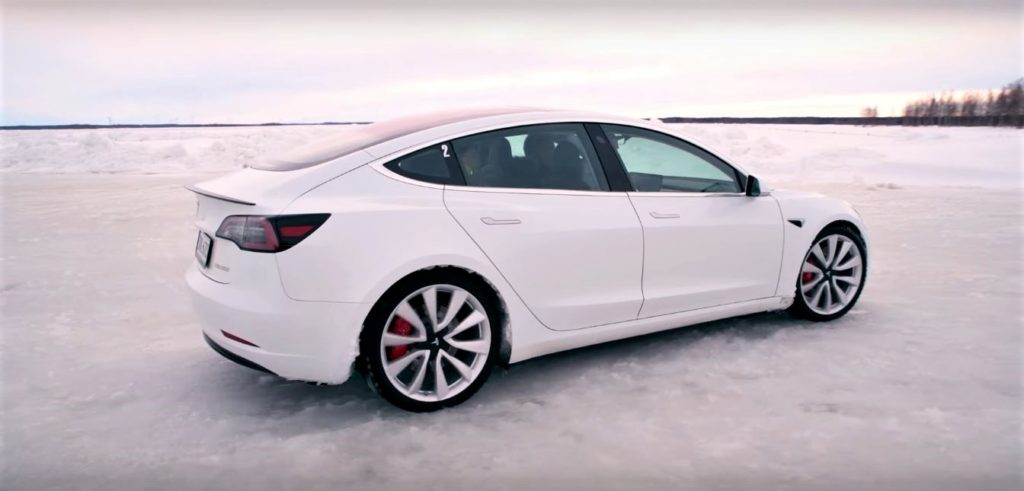
“I passed several dozen people that couldn’t even get their car started in front of their house this morning, as I kind of ripped by them in my electric vehicle that apparently doesn’t work in those sort of temperatures. I wake up with a ‘full tank’ every morning because I plug in at night, and I wake up, and my car’s fully charged in the morning. I’ve got more than enough range to do all the regular stuff that I need to do on a daily basis,” Pointer said.
Explaining further, the Tesla owner stated that it’s just a matter of design between EVs and internal combustion cars. Electric cars have far fewer components compared to gasoline or diesel-powered automobiles. Thus, there are far fewer things that can get compromised by the cold. Couple this with Tesla’s excellent battery management system, and the company’s vehicles become incredibly effective for winter.
“The great thing about an electric vehicle is that it has significantly less moving parts, and you’re essentially driving one massive battery that’s very good at maintaining its heat and keeping itself going. There’s no moving parts that need to go through this magical movement and means of combustion and getting things preheated all at a minus-45-degree temperature. Essentially for us to start our cars, we just touch a button, the screen pops up, and we just drive to work from there,” he explained.
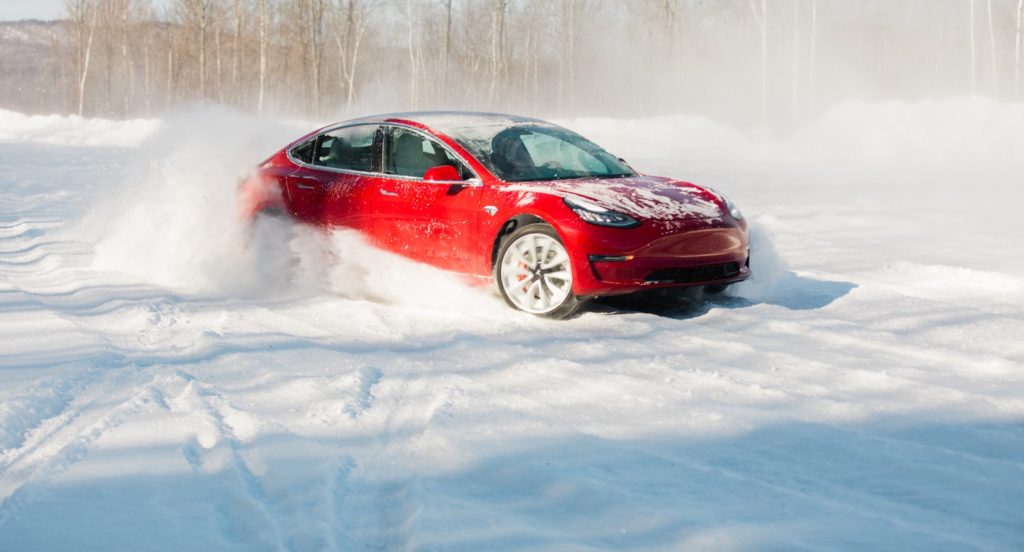
In a statement to the publication, Tyler Krause, a fellow resident of Saskatchewan and a Tesla Model 3 owner, described how easy it is to live with an electric car during the coldest months of the year. “Yesterday it was -37 C (-34.6 F), and it wasn’t a problem. I went to heat it up. It took like 10 minutes and I was off. I drove by probably three or four people that were getting boosted on the side of the road and I had no issues,” he said, adding that none of the local Tesla Owners Club members have reported any issues during winter.
Perhaps one thing that usually gets forgotten by electric vehicle critics is the fact that all cars, even those powered with the internal combustion engine, lose range during the coldest months of the year. With this in mind, it all comes down to convenience, and based on the accounts of actual Tesla owners from one of the colder places in North America; EVs have ICE beat by a wide margin. The proof lies in actual experiences from Tesla owners, as well as the company’s sales figures from cold countries such as Norway and the Netherlands, where the Model 3 has been making its presence known.

Elon Musk
Delaware Supreme Court reinstates Elon Musk’s 2018 Tesla CEO pay package
The unanimous decision criticized the prior total rescission as “improper and inequitable,” arguing that it left Musk uncompensated for six years of transformative leadership at Tesla.

The Delaware Supreme Court has overturned a lower court ruling, reinstating Elon Musk’s 2018 compensation package originally valued at $56 billion but now worth approximately $139 billion due to Tesla’s soaring stock price.
The unanimous decision criticized the prior total rescission as “improper and inequitable,” arguing that it left Musk uncompensated for six years of transformative leadership at Tesla. Musk quickly celebrated the outcome on X, stating that he felt “vindicated.” He also shared his gratitude to TSLA shareholders.
Delaware Supreme Court makes a decision
In a 49-page ruling Friday, the Delaware Supreme Court reversed Chancellor Kathaleen McCormick’s 2024 decision that voided the 2018 package over alleged board conflicts and inadequate shareholder disclosures. The high court acknowledged varying views on liability but agreed rescission was excessive, stating it “leaves Musk uncompensated for his time and efforts over a period of six years.”
The 2018 plan granted Musk options on about 304 million shares upon hitting aggressive milestones, all of which were achieved ahead of time. Shareholders overwhelmingly approved it initially in 2018 and ratified it once again in 2024 after the Delaware lower court struck it down. The case against Musk’s 2018 pay package was filed by plaintiff Richard Tornetta, who held just nine shares when the compensation plan was approved.
A hard-fought victory
As noted in a Reuters report, Tesla’s win avoids a potential $26 billion earnings hit from replacing the award at current prices. Tesla, now Texas-incorporated, had hedged with interim plans, including a November 2025 shareholder-approved package potentially worth $878 billion tied to Robotaxi and Optimus goals and other extremely aggressive operational milestones.
The saga surrounding Elon Musk’s 2018 pay package ultimately damaged Delaware’s corporate appeal, prompting a number of high-profile firms, such as Dropbox, Roblox, Trade Desk, and Coinbase, to follow Tesla’s exodus out of the state. What added more fuel to the issue was the fact that Tornetta’s legal team, following the lower court’s 2024 decision, demanded a fee request of more than $5.1 billion worth of TSLA stock, which was equal to an hourly rate of over $200,000.
Delaware Supreme Court Elon Musk 2018 Pay Package by Simon Alvarez
News
Tesla Cybercab tests are going on overdrive with production-ready units
Tesla is ramping its real-world tests of the Cybercab, with multiple sightings of the vehicle being reported across social media this week.
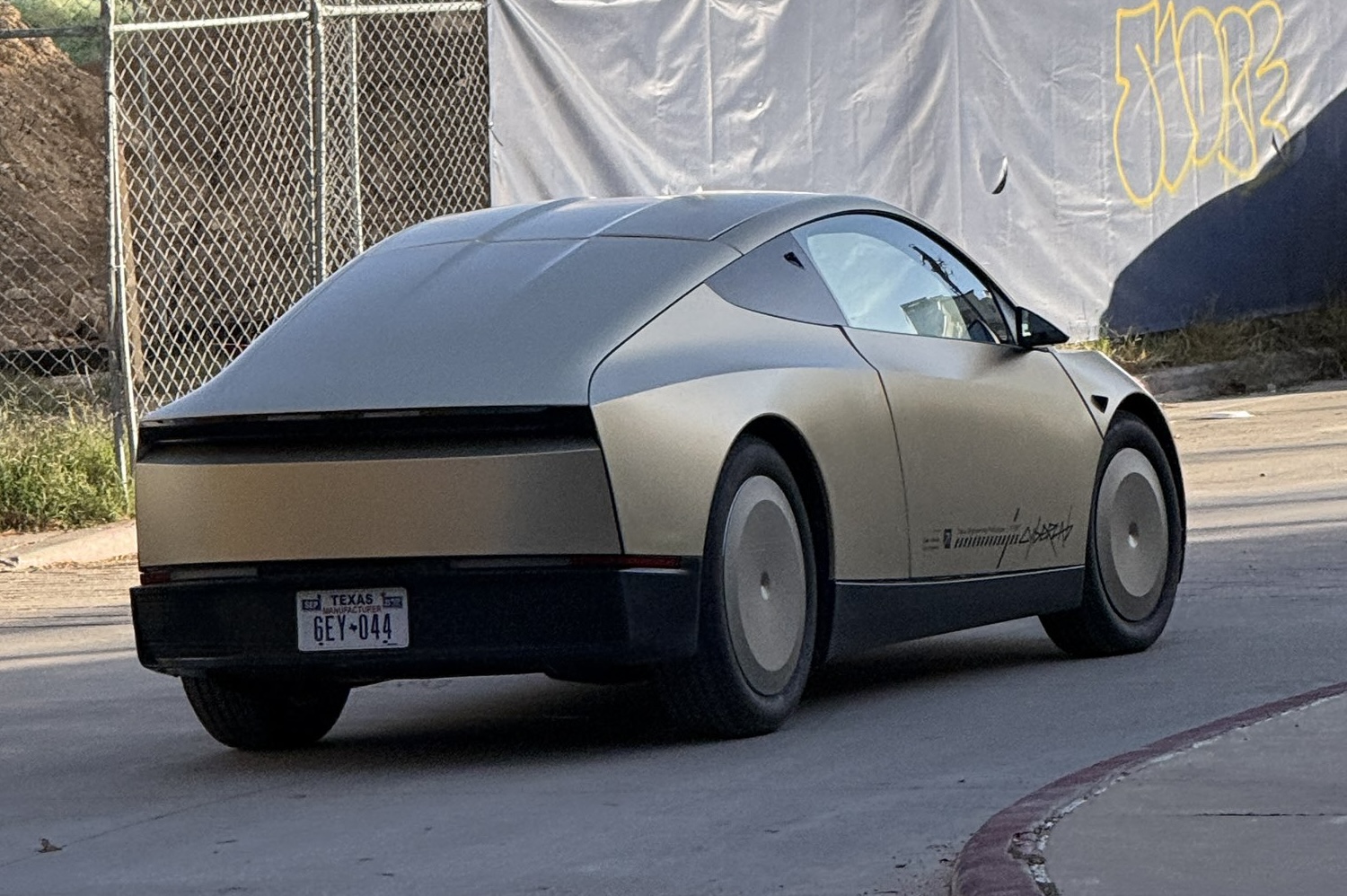
Tesla is ramping its real-world tests of the Cybercab, with multiple sightings of the autonomous two-seater being reported across social media this week. Based on videos of the vehicle that have been shared online, it appears that Cybercab tests are underway across multiple states.
Recent Cybercab sightings
Reports of Cybercab tests have ramped this week, with a vehicle that looked like a production-ready prototype being spotted at Apple’s Visitor Center in California. The vehicle in this sighting was interesting as it was equipped with a steering wheel. The vehicle also featured some changes to the design of its brake lights.
The Cybercab was also filmed testing at the Fremont factory’s test track, which also seemed to involve a vehicle that looked production-ready. This also seemed to be the case for a Cybercab that was spotted in Austin, Texas, which happened to be undergoing real-world tests. Overall, these sightings suggest that Cybercab testing is fully underway, and the vehicle is really moving towards production.
Production design all but finalized?
Recently, a near-production-ready Cybercab was showcased at Tesla’s Santana Row showroom in San Jose. The vehicle was equipped with frameless windows, dual windshield wipers, powered butterfly door struts, an extended front splitter, an updated lightbar, new wheel covers, and a license plate bracket. Interior updates include redesigned dash/door panels, refined seats with center cupholders, updated carpet, and what appeared to be improved legroom.
There seems to be a pretty good chance that the Cybercab’s design has been all but finalized, at least considering Elon Musk’s comments at the 2025 Annual Shareholder Meeting. During the event, Musk confirmed that the vehicle will enter production around April 2026, and its production targets will be quite ambitious.
News
Tesla gets a win in Sweden as union withdraws potentially “illegal” blockade
As per recent reports, the Vision union’s planned anti-Tesla action might have been illegal.

Swedish union Vision has withdrawn its sympathy blockade against Tesla’s planned service center and showroom in Kalmar. As per recent reports, the Vision union’s planned anti-Tesla action might have been illegal.
Vision’s decision to pull the blockade
Vision announced the blockade in early December, stating that it was targeting the administrative handling of Tesla’s facility permits in Kalmar municipality. The sympathy measure was expected to start Monday, but was formally withdrawn via documents sent to the Mediation Institute and Kalmar Municipality last week.
As noted in a Daggers Arbete report, plans for the strike were ultimately pulled after employer group SKR highlighted potential illegality under the Public Employment Act. Vision stressed its continued backing for the Swedish labor model, though Deputy negotiation manager Oskar Pettersson explained that the Vision union and IF Metall made the decision to cancel the planned strike together.
“We will not continue to challenge the regulations,” Petterson said. “The objection was of a technical nature. We made the assessment together with IF Metall that we were not in a position to challenge the legal assessment of whether we could take this particular action against Tesla. Therefore, we chose to revoke the notice itself.”
The SKR’s warning
Petterson also stated that SKR’s technical objection to the Vision union’s planned anti-Tesla strike framed the protest as an unauthorized act. “It was a legal assessment of the situation. Both for us and for IF Metall, it is important to be clear that we stand for the Swedish model. But we should not continue to challenge the regulations and risk getting judgments that lead nowhere in the application of the regulations,” he said.
Vision ultimately canceled its planned blockade against Tesla on December 9. With Vision’s withdrawal, few obstacles remain for Tesla’s long-planned Kalmar site. A foreign electrical firm completed work this fall, and Tesla’s Careers page currently lists a full-time service manager position based there, signaling an imminent opening.








